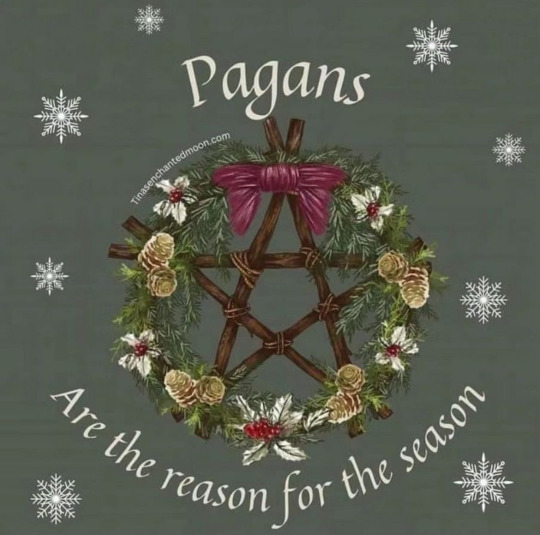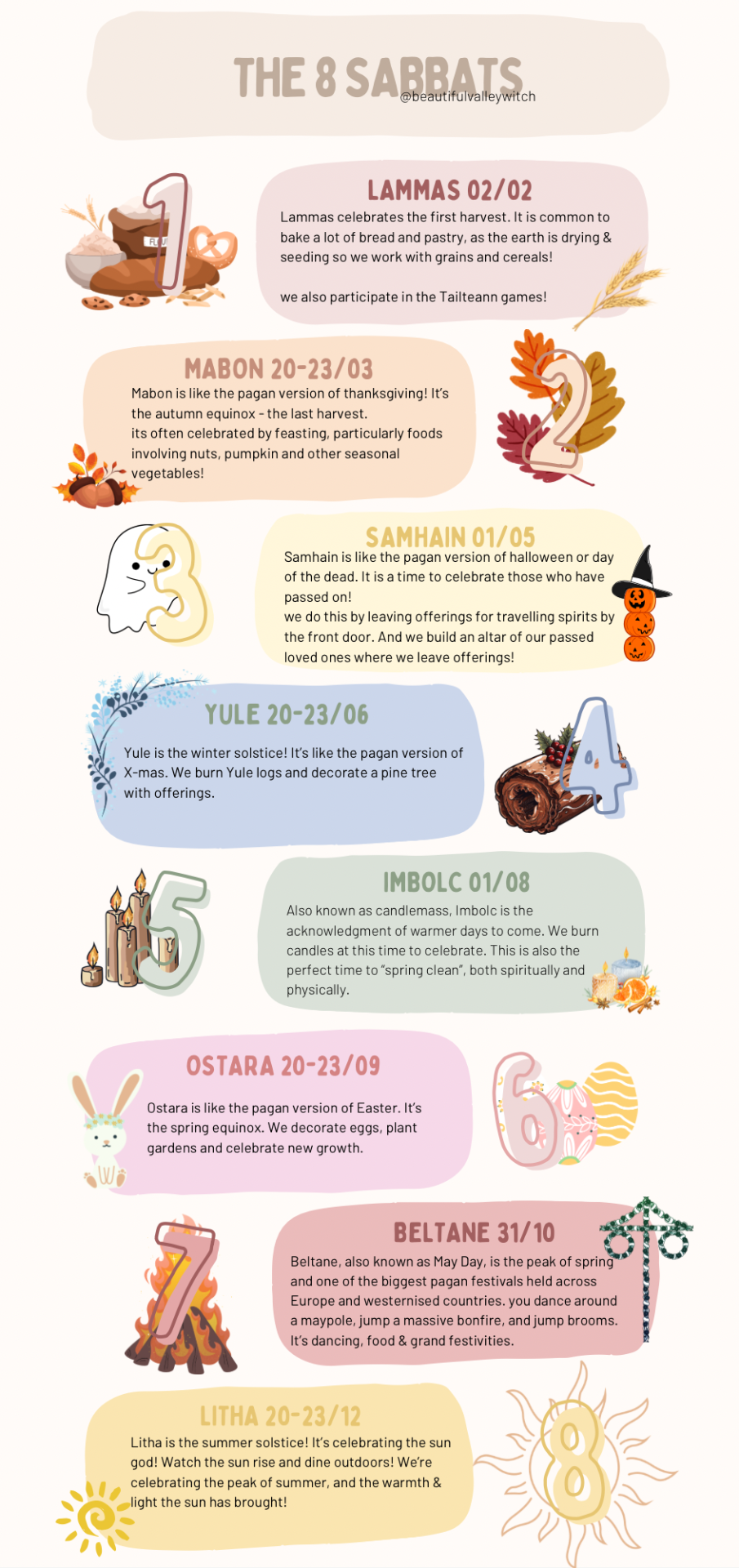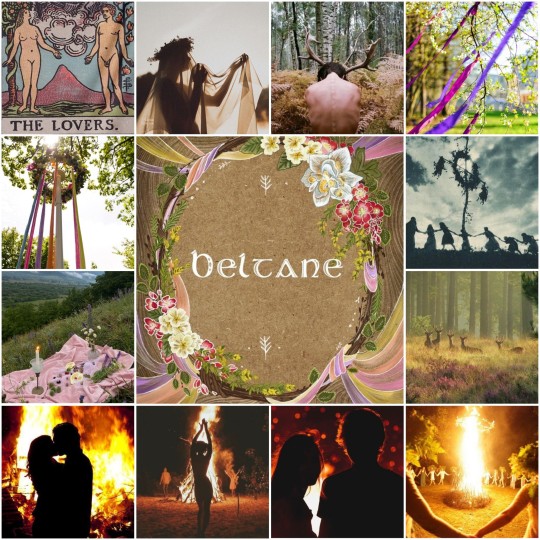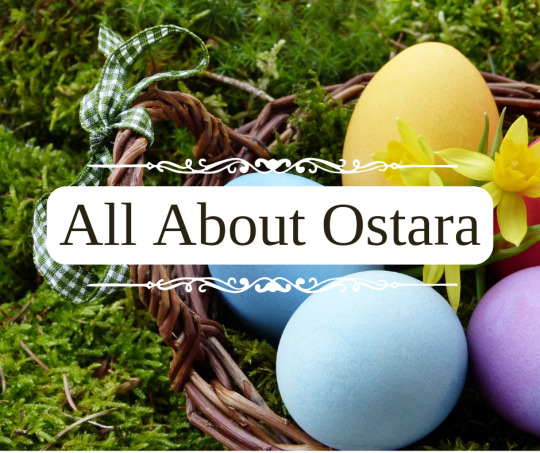#Wiccan Sabbats
Text
Beltane 2024
Sunflowers
Happy Beltane to all! May you be blessed with the season’s energies.
Beltane
To our ancestors, Beltane celebrates the beginning of summer. Bale or “bon” fires are an important part of the Beltane Sabbat. All fires at home or in shops were extinguished and then re-lit from the sacred bonfires that blazed on the tops of the surrounding hills. This was also the time when the herds were…

View On WordPress
#Beltaine#Beltane#education#goddess#may day#may pole#Moonwater Silverclaw#spirituality#The Hidden Children of the Goddess#Wheel of the wiccan year#Wicca#Wiccan#Wiccan Sabbats#witch#witchcraft
2 notes
·
View notes
Text
youtube
3 notes
·
View notes
Text
Podcast: The BS-Free Witchcraft Podcast
Host: Trae Dorn (solitary eclectic Wiccan for 20+ years)
Episode: 33. The Wheel of the Year
Air date: 27 March 2021
Playtime: 30 minutes
Website | Apple Podcasts | Spotify
Introduces the 8 Wiccan Sabbats. Covers their names & cultural origins. Briefly addresses the misinformation about Christian’s stealing pagan holidays. Covers supposed origins for the 8 Sabbats in Wicca via Gardner & Nichols.
0 notes
Text

Blessed Lammas/Lughnasadh 🪻🥖🌻
#lammas#lughnasadh#pagan#fire festival#summer#wiccan#wheel of the year#pagan holiday#moodboard#celtic#celtic holiday#witchy aesthetic#witchcraft#witchblr#sabbats#sabbat#wicca
229 notes
·
View notes
Text

All About Imbolc
Imbolc, also known as Imbolg, celebrated on February 1st, marks the halfway point between the winter solstice and the spring equinox in early Ireland and Scotland, and also signified the beginning of the first signs of spring after all the harsh winter days. Originally a pagan holdiay in pre-Christian times, there is little in writing about the historic traditions and customs, although many historians believe it revolved around the Celtic Goddess Brigid, lambing season, and cleansing due to observed ancient poetry.
Brigid is a Goddess and daughter of the father-God of Ireland, Dagda. She is associated with quite a few things depending on the sources, but universally associated with wisdom and poetry. Other associations of hers are blacksmithing, protection, domesticated animals, childbirth, fire, and healing. She was also known as a protector of the home and the family.
Once Christianity arose, it is believed that the Goddess was syncretized with the Irish Saint Brigid by Christian monks due to the many overlapping associations. This caused Imbolc to quickly turn into St. Brigids Day and the next day into Candlemas with the rising Christian popularity, enmeshing the holiday associations together.
Today, many people have mixed the traditions and melded many associations from both religious and cultural history to celebrate their own unique way. Common ways to celebrate are making a Brigid's Cross, welcoming Brigid into the home, having a feast in her honor, cleaning the home and oneself, visiting a holy well, and in some parts of the world they still hold festivals and processions carrying a representation of Brigid. Many pagans nowadays are using associations of hers and their connection with nature to create their own ways to celebrate, however, and you can absolutely celebrate however you feel called to do so.
Imbolc Associations:
Colors - white, gold or yellow, green, and blue
Food - milk, butter, cheese, seeds and grains, breads, herbs, blackberries, oat porridge, wild onion and garlic, honey
Animals - sheep and lambs, swans, cows, burrowing and hibernating animals
Items - candles, corn dolls, Brigid's cross, fires, snowdrops and white flowers, crocuses and daffodils, flower crowns
Crystals - amethyst, garnet, ruby, quartz, bloodstone
Other - lactation, birth, feasting, farm preparation, cleansing and cleaning, the sun, poetry and creative endevours, smithing, water
Ways To Celebrate Imbolc:
make a Brigid's cross
light candles
have a feast
bake bread
plan your spring garden
leave an offering for Brigid
make a corn doll
craft a flower crown
clean your home
take a cleansing bath
make something out of metal
have a bonfire
look for the first signs of spring
make your own butter or cheese
do divination work and seek wisdom
write a poem
#magical#magic#magick#witch#witchy#pagan#paganism#witchblr#imbolc#imbolg#brigid#st brigid#candlemas#holiday#baby witch#witch tips#sabbat#wheel of the year#wiccan#celtic#gaelic#history#brigit#beginner witch#witchcraft#witchcore#cottage witch#hedge witch#green witch#eclectic witch
426 notes
·
View notes
Text

For all the northern hemisphere witches, it's comming up to the summer solstice.
(source: no longer active on instagram)
#litha#midsummer#summer solstice#wheel of the year#sabbat#wiccan sabbat#pagan sabbats#witchblr#witches of tumblr#witchcraft#wicca#pagan#witchy#witchy things#magick#green witch#baby witch#witch community
196 notes
·
View notes
Text





#witchy vibes#witchythings#witchcore#green witch#witch aesthetic#nature#witchblr#witch blog#witch community#moon witch#moon magic#moon phases#sabbats#litha#baby witch tips#beginner witch#witchcraft community#sage sageburning cleansing witchy witchcraft witchytips witchystuff witchblr#witchcraft 101#witches of tumblr#wiccalife#green wicca#pagan wicca#wiccablr#wiccamagic#wiccan
161 notes
·
View notes
Text

163 notes
·
View notes
Text
🕯️Imbolc Preparations 🌱

What an eventful winter it’s been!After a long period of rest, I’m really looking forward to Imbolc. Here are some things I’ve done to prepare:
🌲 Putting away all the holiday decorations
🌱 Planting seeds
📦 Re-organising and getting rid of old items
♻️ Recycling old paperwork/schoolwork
💻 Deleting old software and documents from school
📱 Deleting apps, photos, texts
👕 Repairing old clothes and buying new clothes
📓 Journalling and making plans to set in motion
🕯️ Making plans for Imbolc

#imbolc#wiccan sabbaths#wiccan sabbat#pagan sabbats#witches sabbat#wheel of the year#sabbat#beginner witch
80 notes
·
View notes
Text
Made this fun little infographic about the sabbats for my non-witchy family to join in on the celebrations! Thought I’d share the love😊❤️ Dates are for the Southern Hemisphere! (If people want I can make another one with northern hemisphere dates)

#pagan#occult#wicca#witchcraft#wiccablr#wiccan sabbat#sabbats#witches of tumblr#witchythings#witchblr#witch#lammas#imbolc#mabon#samhain#beltane#yule#litha#ostara#southern hemisphere
85 notes
·
View notes
Text

Drew this candle a while ago just to warm up.
Lammas blessings by the way. And happy harvest!
Some years ago some of my fellow online Wiccan buddies have come with an idea of making a candle chain for every sabbat, not just Imbolc. Each of us was keeping the flame for 24 hours (more or less, depended on our schedule and time zones), then passed it to another via phone call or message. I loved taking part in it. Especially when making phone calls! (I didn't have a smartphone yet when we've just started so messaging was harder than phoning).
Sadly that web coven is no more.
But therefore it's totally OK to post candle drawings for each Sabbat (until at last I come up with something new)
#yes my fav things for warm up/relax drawing are mushrooms birds and light (candles torches lanterns etc)#traditional art#amentet draws#artists on tumblr#colored pencils#sketchbook#traditional sketch#lammas#lughnasadh#wheel of the year#sabbat#harvest#witchy#wiccan#witchblr
32 notes
·
View notes
Text
Happy Ostara 2024
Spring Arrives with Ostara
Happy Ostara all of us at GoddessHasYourBack.com wish you and all your kin a great sabbat.
Ostara
Ostara happens at the Spring (Vernal) Equinox. The days become equal to the night, and the light finally overcomes the darkness of winter. Ostara’s theme is fertility. The God courts the Goddess and their sexual energies of desire flow over the Earth, leading to a burst of…

View On WordPress
#Blog#education#goddess#Moonwater Silverclaw#Ostara#spirituality#The Hidden Children of the Goddess#Wheel of the wiccan year#Wicca#Wiccan#Wiccan Sabbats#witch#witchcraft
6 notes
·
View notes
Text
Beltane Activities List:
(These are the things I’ll be doing on May 1st, these are simply ideas, obviously adapt them to your craft and belief system)
🌼Buy some fresh yellow flowers
🌼Play my Beltane playlist
🌼Research Fairies
🌼 Go Outside and meditate
🌼Wear Ribbons or flowers in my hair
🌼Light a candle
🌼Put a log on the fireplace
🌼Do some flower picking (With Jörd’s permission)
🌼Eat fresh fruit like strawberries
🌼Dance to music (like my playlist or this YouTube video that I link here) https://youtu.be/JjbV0wvGVDA
youtube
🌼Have my study ambience be the dead of night’s Beltane ambience altar (linked) https://youtu.be/Q18JUCVWOV8
youtube
🌼Take a ritual shower
🌼Do a meditation that is specifically for Beltane
🌼Do divination using a Beltane spread
🌼Display a Beltane vibes Oracle or tarot card on your altar
🌼Be childlike and enjoy everything!
🌼Work with stones like
-Carnelian for enjoyment & creativity
-Citrine for sunshine positivity
-Garnet for love and grounded abundance
-Staurolite for working with the faeries or Alfr as well as lucky attributes
-Unakite for connecting with nature spirits and the energy of spring
🌼Drink lemon water!
🌼Make art inspired by this pagan festival (draw faeries, flowers, bonfires, maypoles, etc)
🌼Have chamomile tea with honey before bed!
That’s it! 🌱🌼🌾🔥
#beltaine#beltane#Beltane ideas#pagan#witchcraft#witch#witchblr#witchy#wiccan sabbat#eclectic pagan#paganism#fire festival#festival#faerie#spirituality#ideas#Youtube#velvetrosewitchery
206 notes
·
View notes
Text

⁺˚⋆。°✩₊✩°。⋆˚⁺ Mabon Blessings ⁺˚⋆。°✩₊✩°。⋆˚⁺
Shop | Instagram | YouTube
#mabon#autumn#fall#autumnal equinox#cottagecore#mabon altar#witchblr#witchy#altar#witchcraft#witch#pagan#paganism#wicca#wiccan#sabbat#green witch#green witchcraft
12 notes
·
View notes
Text

Blessed Beltane 🏵️🌱🌼
#beltane#may day#pagan#wicca#wiccan#first of may#may first#witch#witchcraft#witchy#pagan holiday#fire festival#sabbat#sabbats#spell#spell work#divination#tarot#spring#summer#the goddess#the horned god#fertility#fertility festival#moodboard#witchy moodboard#wheel of the year
44 notes
·
View notes
Text

All About Ostara
In this context, Ostara is simply the name for the modern pagan celebration of the spring equinox, celebrated in the Northern Hemisphere around March 19th, or by some on the first full moon after the spring equinox. It is considered a Germanic holiday, but we'll talk a little about the different Goddesses associated with the holiday Ostara, as well as the history and where we're at today with our findings.
Unfortunately, there is not much historical text about the holiday Ostara or the associated ancient holiday Eostre, with the earliest known text being from an English monk from the 7th century, Venerable Bede. In his texts, he states that the rough equivalent of the month of April was dedicated to the Goddess Eostre and called Eosturmonath, but that was about all it mentioned.
Monks like Bede back in the day had orders to Christianize pagan traditions in order to slowly convert pagans to Christianity in the least-resistant way, which often meant adopting their festival dates, names of feasts, and whatnot, which was the purpose of mentioning this holiday in his texts in the first place.
Back in the day, the written reoccurant date of Easter had been debated since it began, as the Ressurection date was hard to nail down. Everyone just knew it happened in spring, so different regions celebrated it at different times. But, scholars believe the Christian church most likely saw that there were date overlaps in pagan celebrations, the Ressurection, and Passover as well, and decided to announce Easter Sunday would always fall on the sunday after the first full moon of the spring equinox, following popular pagan lunar traditions. They also adopted the new name from Eostre, cleverly combining the current pagan celebrations around rebirth and the sun into their own holiday traditions, in order to convert people to their religion, while also uniting their own people to celebrate on one date.
Although at one point these were all different celebrations, the Christian church did a very good job of combining and converting the pagan celebrations into their own, enmeshing them for life in history books and making it hard for modern day scholars to distinguish the origins of the pagan holidays seperate from the Christian church's.
After that, the next set of text with a reference to the holiday Ostara or Eostre came over a thousand years later during the Romantic period in 1835, by one of the Grimm brothers, Jacob, while he talked about mythology. In his work, he bridged Eostre with it's Germanic counterpart, Ostera or "Easter" as we know it today, and with the Goddess Ostara. In medieval Germany, they celebrated Ostarun in the month of Ostarmanoth, which gave way to the modern feast of Ostern ("Easter") today. He used these overlaps and more to claim that the two holidays and even Goddesses were most likely one historically
Just like with Grimm, there is mostly just speculation based on language, names, celebrations, etc. In modern-day society, it seems the holidays and Goddesses/Gods of Ostara, Eostre, and Easter have all been mashed up together from bridging multiple pagan religions with Christianity and struggling to seperate it again when we have almost no historical texts to help, since everything way back in the day was based on oral tradition.
As for the Goddess Eostre, who was supposedly a Goddess of fertility and light, she was so rooted in the region surrounding her that it was easier to adopt her namesake for the new Easter holiday (that enmeshed the series of Christian holidays) rather than rebrand under something Christian. According to Bede, her feasting was held in the month of April and celebrated spring. But that's all he mentioned, so her actual traditions have been lost to time, with only speculation to go off of.
After that, Grimm tried to link her with the Goddess Ostara, but we have no historical texts saying she is the same. Nowadays, the only mentions of the Goddess Eostre is with new-age pagan Wiccan practices where they, too, seemed to have linked her with the Goddess Ostara. Historically, it is most likely that the Goddess Eostre is a region-specific Goddess, as she was worshipped in Southeastern England by Anglo-Saxons, and that's where we see the oldest versions of her name referenced in text.
As for the Goddess Ostara, according to Grimm, she seems to have been the more wide-spread form of the Germanic Goddess Eostre, instead of region-specific, and he was the one who first translated her name to Ostara. This is the first historical text we have mentioning Ostara as a Goddess and not just a holiday, which means they (Eostre and Ostara) are technically one in the same, since Grimm was the one who translated the Goddesses name to German in the context that we use today.
In terms of associations with the newly translated Goddess Ostara, the first known reference of rabbits with Ostara in writing was mentioned in a mythology text written by Adolf Holtzmann in 1874 where he related the German tradition of the Easter Hare with Ostara by claiming the symbolism of 'the hare' was also probably sacred to the Goddess.
Afterwards, In 1889, an issue in the Journal of American Notes and Queries talks about the Germanic Tradition of the Easter Hare (gifting cotton stuffed flannel bunnies to children along with Easter eggs) and the story behind it, stating that "The hare was originally a bird, and was changed into a quadruped by the Goddess Ostara; in gratitude to Ostara or Eastre, the hare exercises its original bird function to lay eggs for the Goddess on her festal day." But that is as far as we've gotten in tracing it in texts.
Most likely, oral tradition has reigned supreme throughout history, and different narratives have surfaced about the origins of the symbolism with Ostara and rabbits and eggs and other things, so it's hard to know for certain what is "true" to celebrating the Goddess and holiday Ostara and what isn't.
In summary, based on the limited evidence that we have surrounding history on this holiday and deity(ies), you should feel free to celebrate Ostara in a way that is meaningful to you, especially since there is much overlap with multiple religions and practices. I did my best to round up the most commonly accepted ways to celebrate, the symbolism, and more related to the holiday and Goddess Ostara/Eostre.
Ostara Associations:
Colors - white, green, yellow, pink, purple, pastels
Food - eggs, fresh greens, dairy products, hot crossed buns, lamb, asparagus, honey, berries
Animals - hares/rabbits and song birds, baby animals, snakes
Items - decorated eggs, lillies, daffodils, tulips, crocuses, dandelions, lavender, other flowers, lemongrass, thyme, red clover, birch trees, seeds
Crystals - aquamarine, amethyst, rose quartz, moonstone, fluorite, amazonite, clear quartz
Other - fertility, renewal, dawn, spring, balance, joy, growth
Ways to Celebrate Ostara:
hold a feast, especially on the full moon after the equinox
plant seeds
connect with nature or go on a walk
decorate eggs
prepare your altar for spring
make a cotton stuffed flannel rabbit
decorate for spring with greenery and flowers
cleanse and clean your home
welcome the dawn and sunrise
bake hot crossed buns
create something
#ostara#eostre#eastre#easter#pagan#wiccan#witchy#witch#witchcore#witches#witchcraft#witchblr#witch community#goddess#gods#holiday#sabbat#sabbath#equinox#moon#full moon#magick#magic#spell#spellwork#cleansing#spiritualism#spirituality#spiritual#baby witch
37 notes
·
View notes